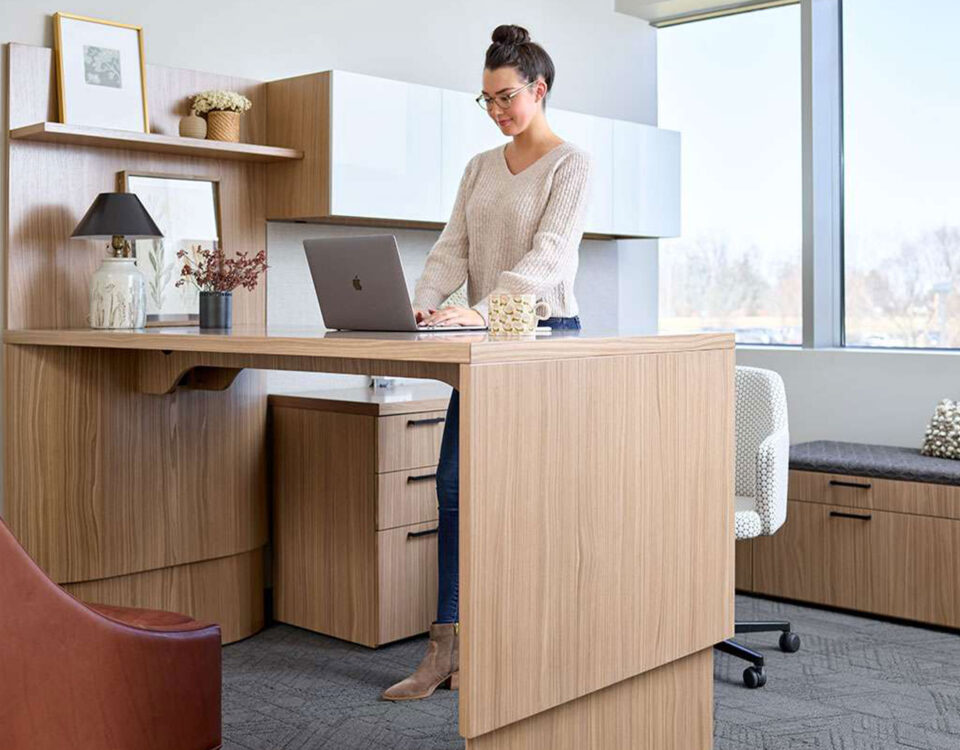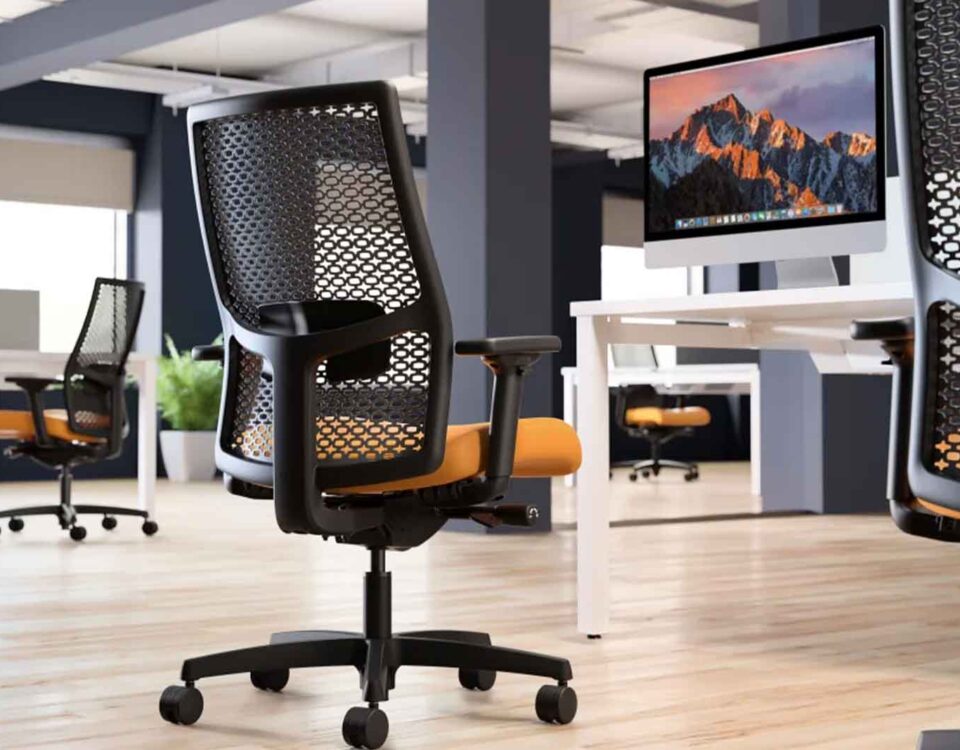Ergonomics 101: Importance of Ergonomics in the Workplace

Everything About LEED Certification & Environmental Design
April 22, 2019
Technologies Shaping Workplace Furniture: Then and Now
May 28, 2019READ TIME: 3-5 Mins
If you’re looking for information about office ergonomics you’ve come to the right place.
Ergonomics this, ergonomics that – today we’re constantly trying to implement best practices in the office in terms of productivity and comfort. I distinctly remember when I was first introduced to this idea. “Are you familiar with ergonomics, Ethan?” I smiled and nodded vigorously, only to rush back to my desk to research. Simply put, ergonomics is, “the study of people’s efficiency in their working environment.” And as per usual, I’ve already done the research for you so all you have to do is read on. (From your ergonomic chair, of course!) Let’s get started!
A Brief History of Ergonomics
The seeds were planted centuries ago when nations started to industrialize and tools were created in order to speed up production. Improvements in machinery and work processes shaped how humans performed their tasks. The modern sense of ergonomics flourished during the World War II era. Machines became increasingly complex, so designs reflected that by gearing towards human functionality more than ever before. In addition, technological advancements gave opportunities for ergonomics to develop into what we know it as today.
Why Office Ergonomics Matters
The baseline goal here is to make the workspace fit the person, not vice versa. Ergonomics applies to just about everything and anything, but in most cases, it will refer to the workspace. According to Business Insider, the average American spends 90,000 hours at work over their lifetime. That means a huge chunk of our daily week is spent in the office, doing work. Employers and employees need to prioritize the key factors when it comes to health and safety for their workplace. There are too many factors at risk to just write off office ergonomics because you think it may be a waste of time and resources.
Here are a few benefits of good office ergonomics:
- A decrease in what is commonly known as Musculoskeletal disorders (MSDs) due to lifting heavy items, pushing/pulling loads, repetitive tasks, sitting in awkward positions, etc., that lead to injuries and days out of the office.
- Reduce costs in workers’ compensations and covering for those who are out of office.
- Increased productivity and quality of work due to a higher level of comfort and accessibility of tools needed to finish tasks.
- Building a better culture for employee engagement and showcasing the company’s core values in worker safety and health.
How Do I Ergo?
There are many ways to improve ergonomics in all workplaces. The initial step is to identify the problem and then strategize a solution. Implement a workplace design that caters to collaboration and movement around the workspace. If one’s job requires them to be in front of a computer screen all day, consider implementing a sit-stand workstation. Height-adjustable work areas have been trending the past few years due to its beneficial factors in giving people options. Also, take a look at your workspace – starting from your keyboard and mouse placement, to your monitor, and especially your chair. You want to make sure your back, shoulders, and arms are relaxed and supported. Arrange your workstation to your comfort. Click here for tips to staying healthy in the workplace!
Simple Guidelines to Follow:
- Your desktop monitor should be at arm’s length away from you
- Wrists should be straight, at or below your elbow level
- Your knees should be aligned with your hips while sitting, adjust your chair height to do so
Ergonomics is designing for the people.
As I was researching, I learned that my posture is horrible and live a very sedentary work life. I unconsciously started shifting my seating habits. We frequently blame poorly designed products for the aches and pains we feel. Whether you’re just starting get your feet wet or adding more features, ergonomics will only help in creating an evergreen workplace for all members of the workplace.
Talk to our design specialists about applying ergonomics to your workplace!




